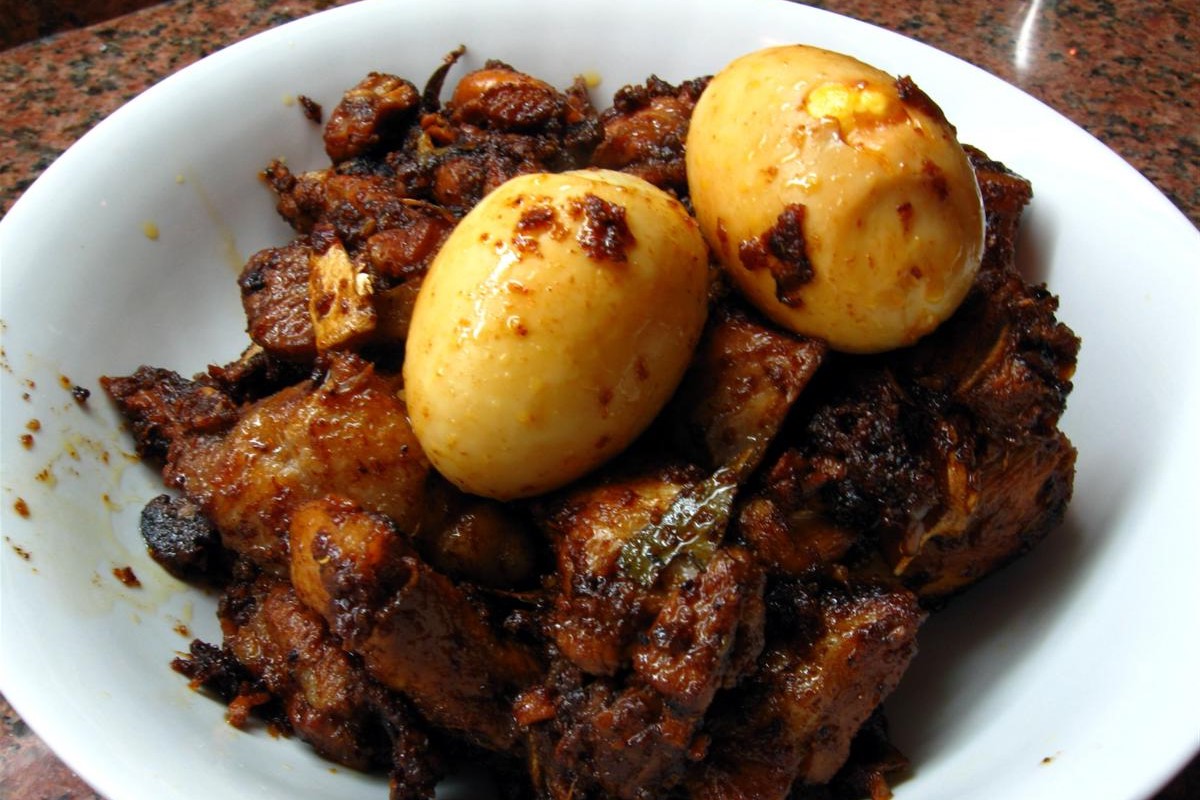The Fascinating Origins Of Adobo: The Philippines’ Beloved Dish

Have you ever wondered where adobo comes from? This delicious dish, known for its savory and tangy flavors, holds a special place in Filipino hearts. The origins of adobo date back to pre-colonial times when indigenous Filipinos used vinegar and salt to preserve meat. Spanish colonizers later introduced soy sauce, which became a key ingredient. Over time, adobo evolved, blending native and Spanish influences into the mouthwatering meal we enjoy today. Whether made with chicken, pork, or even seafood, adobo remains a staple in Filipino cuisine, celebrated for its rich history and unforgettable taste.
The Birthplace of Adobo
Adobo, a staple in Filipino cuisine, has a rich history. Its origins trace back to various regions in the Philippines, each adding unique twists to the dish. Let's explore some key places where this beloved dish began.
Luzon
Luzon, the largest island in the Philippines, is where many believe adobo first took root. The island's diverse culture and history have influenced its version of adobo, often featuring a blend of soy sauce, vinegar, and garlic.Visayas
In the Visayas region, adobo takes on a slightly different flavor profile. Here, locals often add coconut milk, giving the dish a creamy texture and a hint of sweetness. This variation showcases the region's abundant coconut supply.Mindanao
Mindanao, known for its rich cultural tapestry, offers a spicier take on adobo. The use of local spices and chili peppers adds a fiery kick, reflecting the bold flavors typical of Mindanaoan cuisine.
Influences from Spanish Colonization
Spanish colonization left a significant mark on Filipino cuisine, including adobo. The term "adobo" itself is derived from the Spanish word "adobar," meaning to marinate.
Manila
Manila, the capital city, became a melting pot of Spanish and Filipino culinary traditions. Here, adobo evolved with the addition of ingredients like bay leaves and black peppercorns, staples in Spanish cooking.Cebu
Cebu, another key city during Spanish rule, also saw the fusion of Spanish and local flavors. Cebuano adobo often includes annatto seeds, which give the dish a distinct red hue and a slightly earthy taste.
Regional Variations and Modern Twists
As adobo spread across the Philippines, each region added its own flair. Today, modern chefs continue to innovate, creating new versions of this classic dish.
Bicol
Bicol, famous for its spicy cuisine, incorporates chili peppers and coconut milk into its adobo. This version, known as "Bicol Express Adobo," is both creamy and spicy, a true testament to Bicolano ingenuity.Iloilo
In Iloilo, adobo is often cooked with achuete (annatto) oil, giving it a vibrant orange color. This variation highlights the region's love for visually appealing and flavorful dishes.Davao
Davao's version of adobo includes the use of local fruits like pineapple or mango. These fruits add a sweet and tangy twist, making Davao adobo a unique culinary experience.
Adobo in Filipino Culture
Adobo is more than just a dish; it’s a cultural icon. It represents the ingenuity and adaptability of the Filipino people.
Batangas
In Batangas, adobo is often cooked with pork and liver, creating a rich and hearty meal. This version is a favorite during family gatherings and celebrations.Pampanga
Pampanga, known as the culinary capital of the Philippines, offers a gourmet take on adobo. Here, chefs experiment with different meats and cooking techniques, elevating adobo to new heights.
Adobo's journey through the Philippines showcases the country's rich culinary heritage. Each region's unique take on the dish adds to its enduring appeal, making adobo a true symbol of Filipino culture.
Adobo's Enduring Legacy
Adobo stands as a testament to the rich culinary heritage of the Philippines. This beloved dish, with its roots in both indigenous and Spanish influences, showcases the country's ability to blend different cultures into something uniquely Filipino. The combination of vinegar, soy sauce, garlic, and other spices creates a flavor profile that is both comforting and complex.
Adobo's versatility allows it to be enjoyed in various forms, whether with chicken, pork, or even seafood. Its enduring popularity speaks volumes about its place in Filipino hearts and kitchens. As you savor each bite, remember the history and tradition that have made adobo a staple in Filipino cuisine. Whether you're a seasoned cook or a curious foodie, exploring adobo is a delicious way to connect with the Philippines' rich cultural tapestry.

